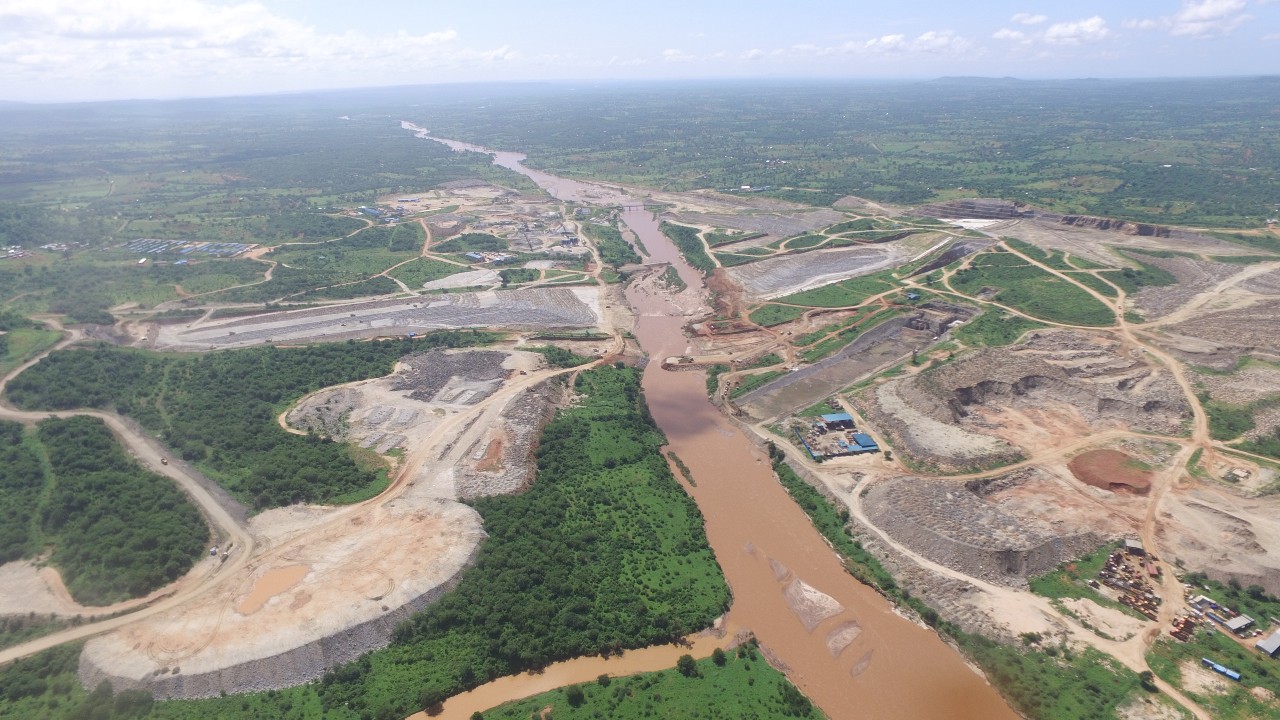AfDB-State funded Kenya’s Thwake Multipurpose Dam set to propel millions of lives
By GODFFREY OLALI
The African Development Bank (AfDB) and the Kenyan Government (GOK) are implementing one of the country’s most ambitious water development projects poised to uplift many lives in the semi-arid lower Eastern region of the country.
Thwake Multipurpose Water Development Program (TMWDP) – an initiative being rolled out in four phases through the Ministry of Water, Sanitation and Irrigation, is already contributing to the transformation of many residents who are already providing for their families and living dignified lives.
When the State and AfDB rolled out the construction of this dam – touted to be the second largest dam in the East African country – residents drawn from the rural parts of semi-arid counties of Makueni, Kitui and parts of Machakos saw it as the missing link and the panacea to their “decades – old water question.”
“This is an important legacy project for the country. It will be second largest dam in Kenya with critical components like water supply system to treat and distribute up to 150,000 cubic metres of treated water per day to 1.3 million of rural inhabitants of Kitui, Makueni and Machakos counties and inhabitants of Konza City and its environs, hydropower generation of 20MW and irrigation works for up to 40,075 hectares of land in Kitui and Makueni counties (approximately 100,000 acres of land),”noted the AfDB Director General, East Africa Operations Ms. Nnenna Nwabufo during her visit to the project in March 2022.
As a socio economic enabler and a contributor to the Kenyan Government’s Big 4 Agenda and Vision 2030 blue-prints, and United Nations backed – Sustainable Development Goals (SDGs), the program is already creating impact on many lives.
Ongoing civil works for Phase 1 and related activities have already created direct and indirect employment of more than 1,200 locals – both men and women who are mainly the bread winners for their families. By this, the project is easing the direct resource dependency pressures.
By March this year, there were an estimated 1,279 Kenyans, mostly drawn from the three counties, employed directly into the dam construction project of which 1,075 staff or 84 per cent were males while 204 staff or 16 per cent were females.
Already, hundreds of casual workers are renting houses in the nearby markets of Mavindini, Katithi, Kanyangi even as shop and business owners are feeling the positive effect of buying power of common household items on a daily basis from Thwake workers.
It is also estimated that the prices of land around the project area has significantly increased and gained value following the planned phases which will open up socio-economic initiatives.
The Program Implementation Team (PIT) and the Program Liaison Team are continuously engaged in community outreach meetings and barazas (informal sessions) to enlighten community members – men and women – on the available job opportunities at the site.
A community Management Health Plan generated from the Health Impact Assessment (HIA) studies is currently under implementation. This initiative is targeting communities living within and around the Thwake dam project area with health outreach campaigns and education activities.
The outreach activities are made to inform the communities living around the Thwake dam site on health related issues and the necessary measures required to observe in protecting themselves against possible health hazards like sexually transmitted diseases, under-age pregnancies, water borne diseases etc.
The town-hall sessions to empower communities living around the dam project have borne fruit and been rolled-out in market centers such as Nzambia, Kathulumbi, Mavindini, Kanyangi, Masimba, Mandongoi, Syotuvali and Kathongo.
Since the contractor moved to site years ago and opened up and improved road connectivity to the site, the move has contributed to the local economic development of the local residents from the villages surrounding Thwake Dam.
By having accessible roads around the Dam, residents and the neighboring villages are progressively being linked to market centers, health centers, access to social amenities like water, increased access to markets, children are able to attend school while families having greater access to their farms.
The villages that weren’t connected with the new roads earlier will hence be out of poverty cycle.
Since agriculture and livestock trade is the mainstay of the economy in Lower Eastern region of Kenya, having proper road network will successfully contribute to the restoration of the rural livelihoods of these communities.
Continuous rehabilitation and opening up of these road network will result in improved access to social and economic services and facilities, a decrease in transportation costs and travel times leading to increased long-term socio-economic benefits. Good road network around the site will see creation of thousands of manual jobs, emergence of small scale industries for the youth and women, boost to access of healthcare and sanitation facilities and sustainable food security.
The project will improve sanitation and hygiene hence minimizing threat of diseases amongst the rural inhabitants in Makueni, Kitui and Machakos.
Provision of water from the dam will see enhanced development and growth of local markets as more economic and social interests arise.
The program, through Corporate Social Responsibility (CSR) initiative and partnership, has allowed stakeholders to benefit through rehabilitation of schools and construction of new classrooms, rehabilitation and construction of health centers and construction of maternity wing and drilling of boreholes. Some of these initiatives are ongoing while others – especially in the education sector have been completed.
This elaborate CSR strategy is, at its very essence, about understanding the needs of communities and individuals to develop context-specific people-centered solutions aiming to overcome existing challenges.
The writer is a Senior Communications Specialist for TMWDP
Ends

